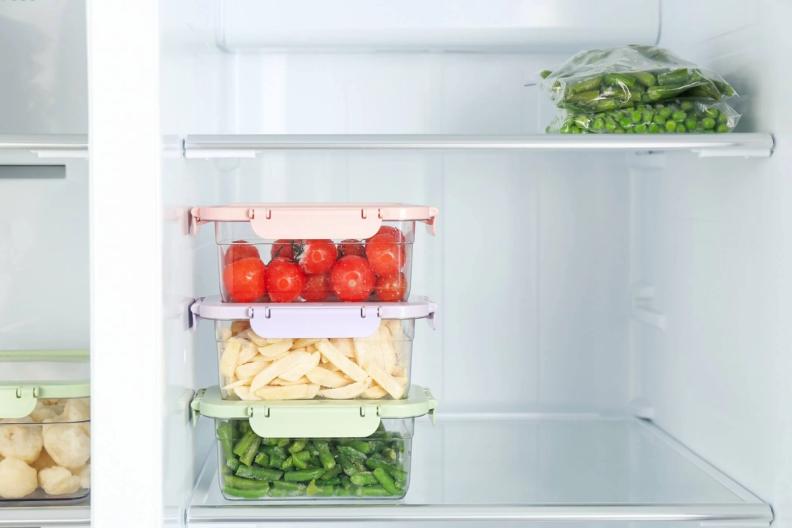We’re answering the question of should you keep fruit and veg in the fridge and filling you in on the best tips for fruit and veg storage.Should you keep fruit and veg in the fridge?


When it comes to reducing food waste, one of the easiest places to focus is on keeping your fresh food fresh. Fruit and veg are among the most-wasted foods, according to the EPA, and we’d be willing to bet that part of this comes down to how we are storing fruit and veg. We’re answering the question of should you keep fruit and veg in the fridge and filling you in on the best tips for fruit and veg storage.
Which fruit should you keep in the fridge?
Fruit that fare better in the fridge include berries, apples, pears, oranges, cherries, pineapple, watermelon and surprisingly, citrus fruits including lemons and limes.
Berries can be stored in the plastic container they came in or in a plastic container with the lid ajar to allow condensation to evaporate. Remove the fruit, clean out the container it came in, dry it, add a paper towel (or reusable cloth) at the bottom and pop it in the fridge.
Apples and pears emit more of a gas known as ethylene. This higher amount of ethylene can cause your other fruit and veg to ripen and decay in an accelerated fashion. Yikes! With this in mind, you’re best to store your apples and pears alone in a crisper, if you can, or in a separate sealed container to the rest of your fruit and veg. The New York Times notes that underripe pears should be left out at room temp in a bowl until ripe, where then they can be transferred into your fridge.
The same ripening rule applies to mangoes, which can be stored loose in the fridge once they have become ripe!

Which veg should you keep in the fridge?
Most veg should be kept in the fridge! Leafy greens should not be stored while damp, as this can cause them to decay faster. Store your leafy greens in sealed containers - if the bag they came in isn’t holey, you can clip the top sealed. Some leaves do better than others - kale and watercress are resilient, as is cabbage if you wrap it in plastic (or a beeswax wrap). If you struggle to get through your salad greens, finely chopped or grated broccoli is a great substitution.
It’s recommended that food with a small green top goes topless when you’re storing them - this goes for carrots, radishes and their friends. These are best stored in sealed containers in the fridge. Mushrooms thrive when you pop them in a sealed container (no surprise there) with a paper towel wrapped around them.
Cabbage can be stored loose in the fridge before you cut it, and then it’s recommended you seal up those pieces. Actually, essentially all other veg should be stored in a sealed container in the fridge.
Herbs, asparagus and spring onions can be treated like flowers. Place them in a small jar with some water and pop them in the fridge.
The exceptions are as follows: potatoes, sweet potatoes, onions, squash and tomatoes (controversial that we’ve put these in this section).
Potatoes, onions and butternut squash should be stored in a cool, dry place like a cupboard. Tomatoes should be put in an open container on a paper towel in a cool, dry place (not the fridge!).
Should you store cut up fruit and veg in the fridge?
The general rule is once you cut fruit and veg, store them in an airtight container in the fridge. They can become dehydrated in there, so if this is a worry, you can top them with a damp paper towel or cloth.
Fruit and vegetables begin to lose nutrients once they are cut so if you’re prepping, prep for just 2 to 3 days ahead. This will ensure your vegetables maintain as much flavour and nutrients as possible. This doesn’t mean you should chuck them past this time - vegetables can still be amazing flavour grabbers in stir fries, stews and soups and soft fruit can be used in smoothies, jams, salad dressings, crumbles and pies.
In the mood to save fruit and veg near you?
FURTHER READING:
Our top pairings for commonly wasted foods
Three easy ways to reduce food waste at home
SOURCES:
How to keep your produce fresh for weeks (NY Times, 2020)
Here’s where to store all your produce (Better Homes and Gardens, 2020)
Share this
start saving food today
Our app is the world's largest marketplace for surplus food. We help users rescue good food from going to waste, offering great value for money at local stores, cafes and restaurants.



